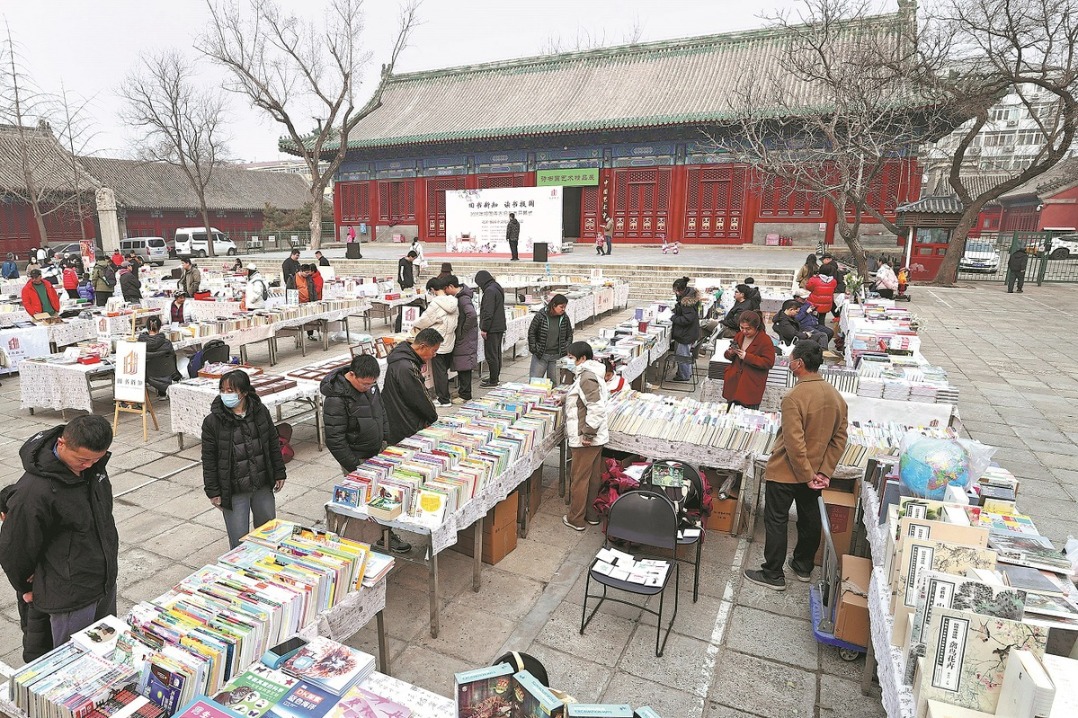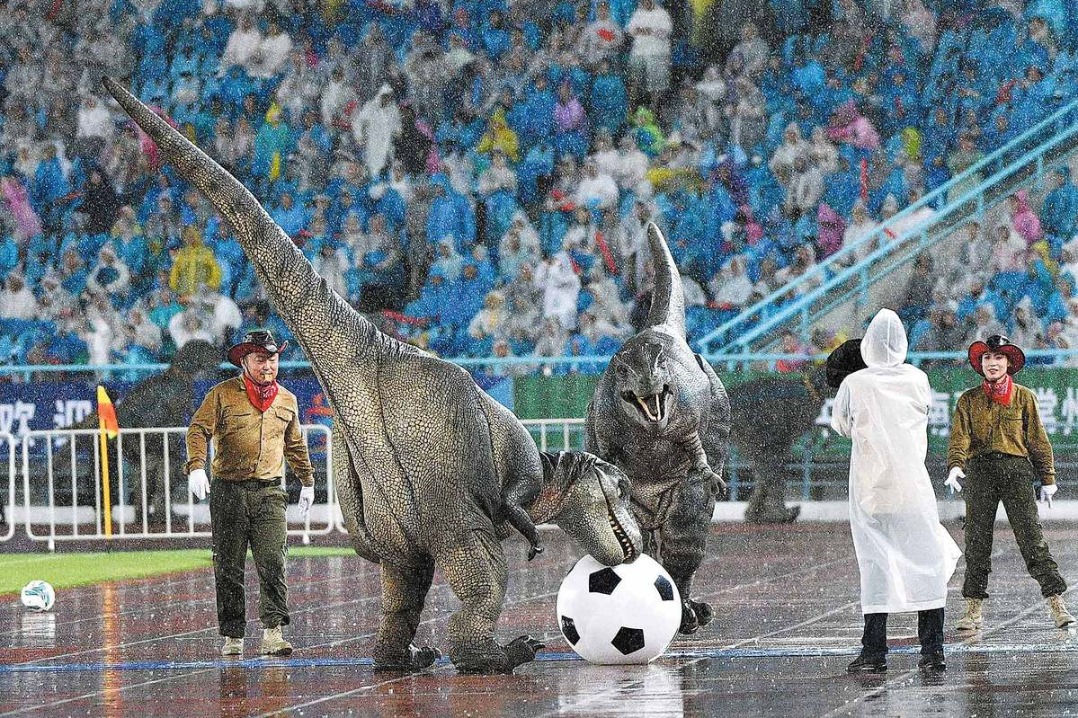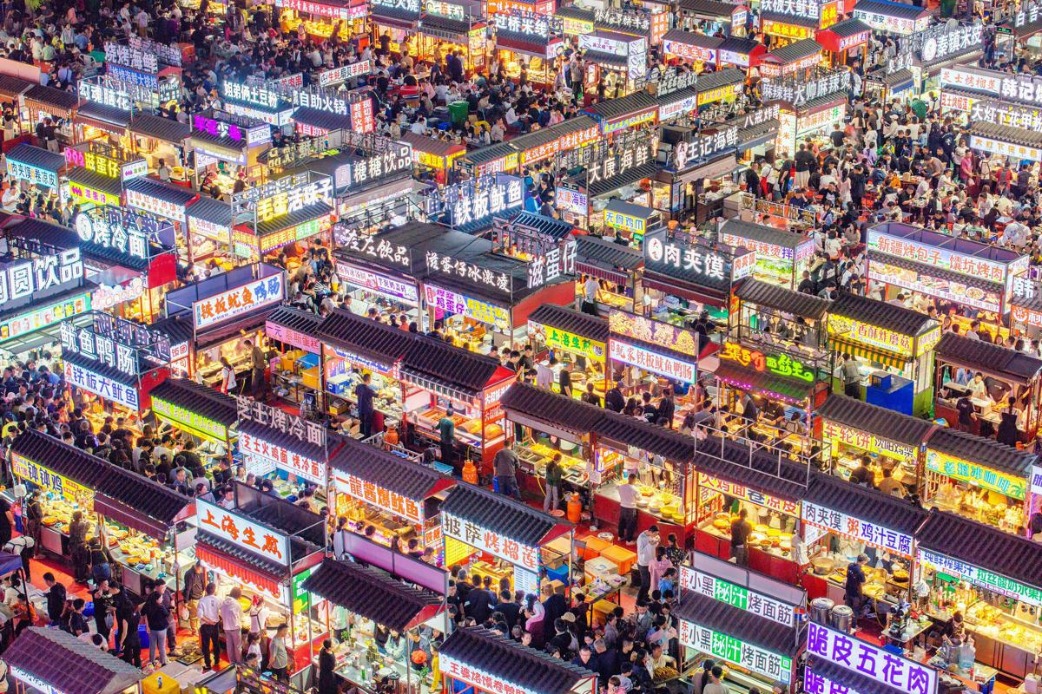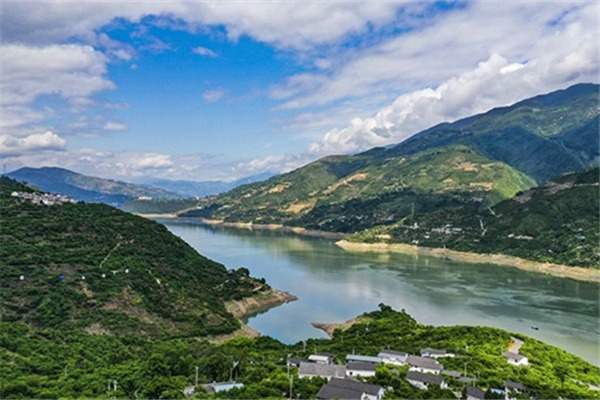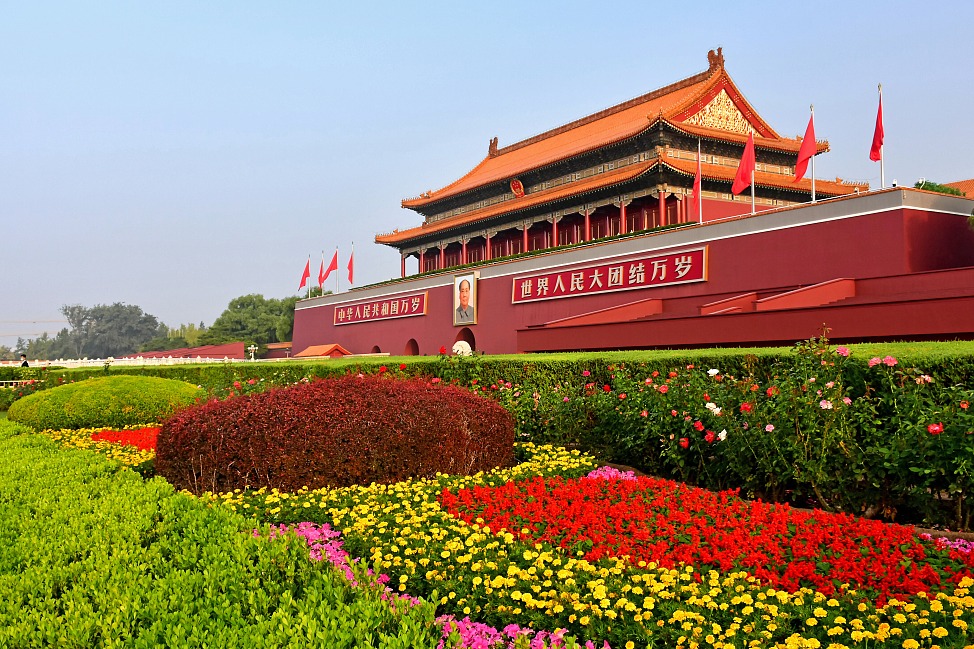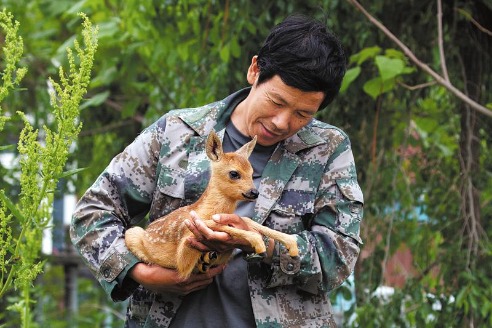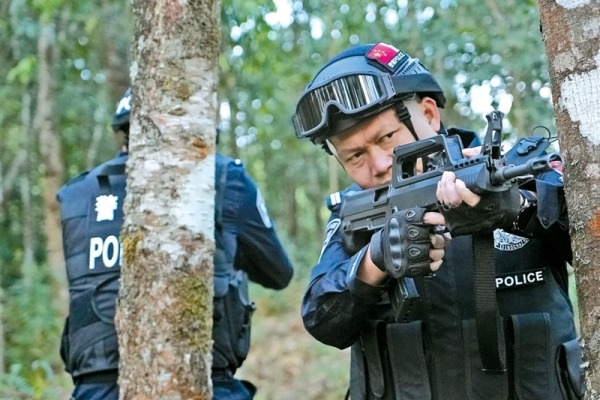Resting in nature

Hong Kong people's perceptions of and beliefs in green burials are changing, as the scarcity of land makes traditional burials nearly impossible. Wu Kunling reports from Hong Kong.

In Hong Kong, where superstition is a cultural norm, talking about death or making arrangements for one's afterlife when a person is still alive and in the pink of health is a taboo.
But Leung Sau-wan brushed aside that mentality and made up her mind in 2017 at the age of 81 about how she would be buried - years in advance, taking into consideration that the Hong Kong Special Administrative Region has one of the longest life expectancies in the world - an average of 86.8 years for females and 80.7 years for males.
Leung wants to have a green burial with her ashes scattered in a garden, as she loves flowers, plants and nature. "It wouldn't be bad lying to rest in a garden after leaving this world," she says.
Leung and her husband had agreed that whoever should pass away first, the one still living would arrange a green burial for the other. The husband died in 2018 and, acting on his wishes, Leung and their two sons scattered his ashes in the Garden of Remembrance at Kwai Chung Columbarium - one of 13 such facilities run across the city by the SAR's Food and Environmental Hygiene Department. The gardens are allocated for families or friends of the deceased to scatter the ashes of their loved ones there, with free services provided by dedicated employees of the department. Commemorative plaques can also be mounted at the sites.
In Hong Kong, families can also opt to scatter the ashes of the deceased at sea. But Leung and her sons have decided to have her ashes strewn in the same garden as her husband's at Kwai Chung Columbarium when the time comes.
A cramped city
Leung's husband was among 7,046 people in Hong Kong who had chosen a green burial in 2018, either by scattering their ashes at sea or at gardens in public or private columbaria, according to the FEHD. The number reached 9,449 in 2022 - nearly triple the 3,400 cases recorded in 2013. By late 2022, more than 9,500 residents had registered with the government, formally expressing their desire to have their ashes sprinkled either at sea or in one of the city's gardens of remembrance after death.
"Hong Kong is cramped with the living. It's even more cramped with the dead," says Leung.
Born in 1936, Leung came to Hong Kong from Foshan, Guangdong province, at the age of 16 to make a living. Having gone through the wars, the nation's reform and opening-up, as well as Hong Kong's return to the motherland in 1997, she has experienced almost all of the economic and social upheavals and changes in the nation's contemporary history.
Her desire is to keep everything in life as simple as possible, including arrangements after her death. To her, placing her ashes in a niche, and having them scattered in a garden of remembrance or at sea are merely different ways of doing it. Her sons may remember her by visiting her niche before they themselves get too old. "Why not have the ashes placed in the garden? Even as a fertilizer, it could be useful."
To enable families to pay tribute to the deceased, public columbaria in Hong Kong have set aside space on their walls to place commemorative plaques. Leung has one for her husband. But when her son, Nelson Wong, returned to the garden in 2019 to pay tribute to his father, he found there were no more spaces available on the wall. Only a few plaques could still be seen hanging up the previous year.
According to research data, only 5 percent of the dead in Hong Kong were cremated in the 1950s. Because of the scarcity of land for burials, authorities have actively encouraged the public to opt for cremation instead of burials since the 1970s. This has led to a surge in cremations - from 35 percent (7,300) in 1975, to 90 percent (41,244) in 2014.
When Wong's grandfather died in the mid-1960s, the family arranged for him to be buried, as burials with coffins were not as severely restricted as they are today. But according to the cemetery's regulations, his grandfather's remains had to be exhumed after 10 years, cremated, and the ashes stored elsewhere. When Wong's grandmother passed away in the mid-1980s, cremation had become very common. She was cremated and her ashes were placed alongside those of Wong's grandfather at Kwai Chung Columbarium.
Effective solution
Still, cremation alone couldn't solve the problem of scarcity of land as the city remained short of public niches. When Wong's father died in 2018, there had already been a dearth of public niches for more than two decades, with over 35,693 people on the waiting list in 2018, according to the FEHD.
The prolonged scarcity of public niches has drastically pushed up prices in privately run columbaria, with one niche costing up to several million dollars, according to a report of the city's Consumer Council in March 2022.
However, the government's multipronged efforts to promote green burials and build new public niches have eradicated the long wait for urns. The FEHD's website shows that applicants now generally don't have to wait too long, with an adequate supply of public niches.
"Residents deserve the freedom to arrange burials for their loved ones with different budgets to meet individual needs, just like any other form of consumption," says Wong.
Like his parents, Wong says he would opt for a green burial for himself when he dies. Still single with no children, he thinks it's pointless to spend too much time and resources making afterlife arrangements. "But it's better to have my ashes scattered in the garden rather than at sea, though."
Sprinkling ashes in the garden is efficient, straightforward and more cost-effective, and is in line with Wong's expectations as convenience comes first. A sea burial would be more troublesome, as family members or friends would have to book a boat or ferry for the ritual, which would also have to depend on weather conditions. Paying tribute to the deceased in a garden offers greater flexibility and convenience in terms of time and transportation.
According to the FEHD, there were 1,012 sea burials in 2022, while 7,695 people chose to have their ashes scattered in the FEHD's garden of remembrance.
Sense of ritual
Tong Cheuk-pan, a practitioner in the burial industry and director of the Shan Sum Institute of Eternal Life and Culture, believes that despite the growing acceptance of green burials, scattering ashes at sea will still be the choice of only a minority for a long time.
Unlike being laid to rest in a remembrance garden, sea burials don't provide a fixed place for families to pay tribute to the deceased.
Tong says people are less willing to hold a sea burial for their loved ones because of the strong bonds between them that existed in life. They might only do so if there weren't other choices available, he says.
The FEHD, which handles matters concerning green burials in Hong Kong, says an applicant opting to have his or her ashes scattered at sea, or the person authorized by the applicant, can select any designated ferry schedule within 10 weeks from the date of submitting an application. Up to 10 family members, relatives or friends for 25 applicants can board the vessel, and the religious beliefs of the deceased and his or her family would be respected, such as using the services of clergymen like priests or monks.
Linda Lee Yin-king, professor of the School of Nursing and Health Studies at Hong Kong Metropolitan University, who personally witnessed the entire process of scattering ashes at sea, says the lack of a sense of ritual at sea may have contributed to the gap between the number of sea burials and those at remembrance gardens.
After boarding a ferry or boat, family members and friends of an applicant are guided to collect a water-soluble bag and fill it with the ashes of their loved one. Once the vessel reaches the designated area, they bid their final farewell before dropping the bag of ashes into the sea through a chute. Lee says the entire process lasts about 10 minutes.
Lee suggests that the duration of the ritual should be extended, and that more relatives and friends be allowed to be present to enhance the sense of ritual.
There must also be adequate supporting services to cope with the growing needs of society in a timely manner. According to Lee, an applicant may have to wait for up to two months in some cases to book a ferry for the service. The FEHD says the three-year-long pandemic led to the quota for free ferry services being reduced by half in 2021 and 2022, but the situation has now returned to normal.
The department also increased the frequency of free ferry services during the grave-sweeping seasons in 2020 and 2023 to help families wishing to pay homage to the deceased at sea. It also allowed more relatives and friends to be present or extend the process if a special request was made.
Broader involvement
Lee suggests that sea and garden rituals should be promoted separately to align with people's different lifestyles. "For example, those who love water activities, such as swimming, or appreciate a sense of freedom in the ocean, are more inclined to embrace the idea of having their ashes scattered at sea."
Young people should also learn about green burials for themselves. "Death isn't something that only the elderly have to face," Lee says. Besides, they should learn more about the option for better discussing it with their elders. She believes that green burials can be discussed along with life-and-death education, senior life planning, as well as advance care projects for patients.
Apart from therapeutic methods and end-of-life care, Lee says, it would be appropriate and natural for doctors to discuss burial options with patients or family members when a patient's health condition approaches an advanced or irreversible stage.
Government statistics show that green burials were held for 15.4 percent of those who died in 2022.
Lee says residents nowadays are better educated and more willing to accept new things. The concept of environmental protection has also made a greater impact on people's way of life. She believes that it will foster quicker acceptance of green burials than cremation saw in the 1970s.
At Leung's age, it isn't uncommon to hear among her friends that someone they knew had "left" - a common euphemism Chinese people use for someone who died. Leung says she no longer cares about taboos or fears death.
"If someone is dead, say he or she is dead. Why do people say someone left? I am alive, just like a light is on. When I die, the light goes off. That's all," Leung says.
When the day comes, she believes she will be happily reunited with her husband, surrounded by plants and flowers she loves in the Garden of Remembrance at Kwai Chung Columbarium.
- Macao ranks 1st in 2024 China outbound tourist satisfaction index
- Xi meets Senegalese PM
- Centenarian veteran embodies patriotism and resilience
- China's revised anti-unfair competition law to take effect Oct 15
- China revises public security administrative penalty law
- Maritime emergency rescue drill held in Sansha, Hainan


















